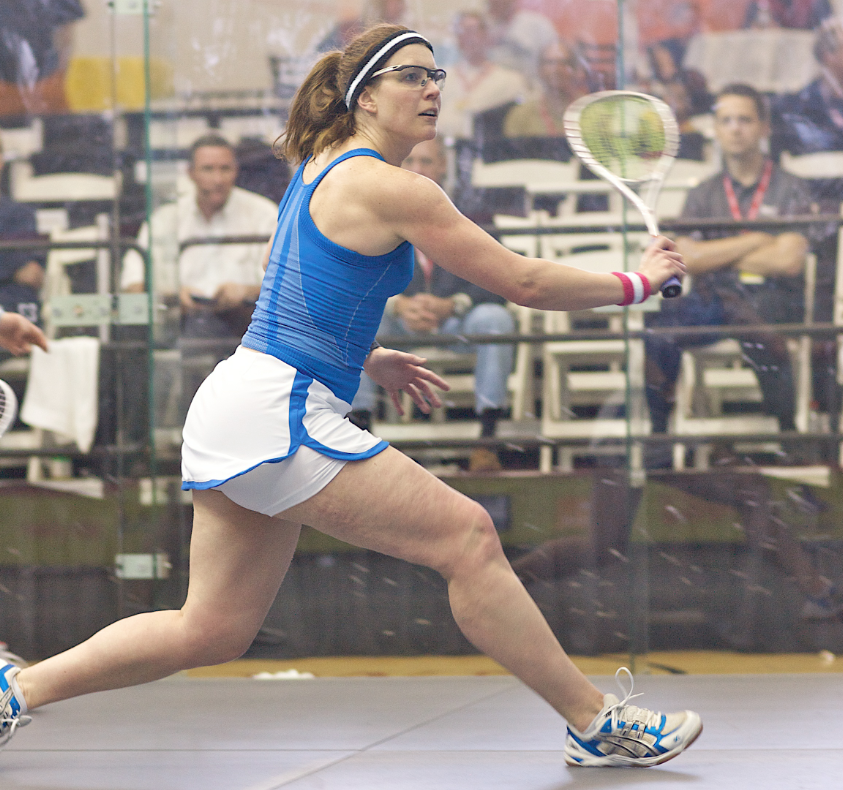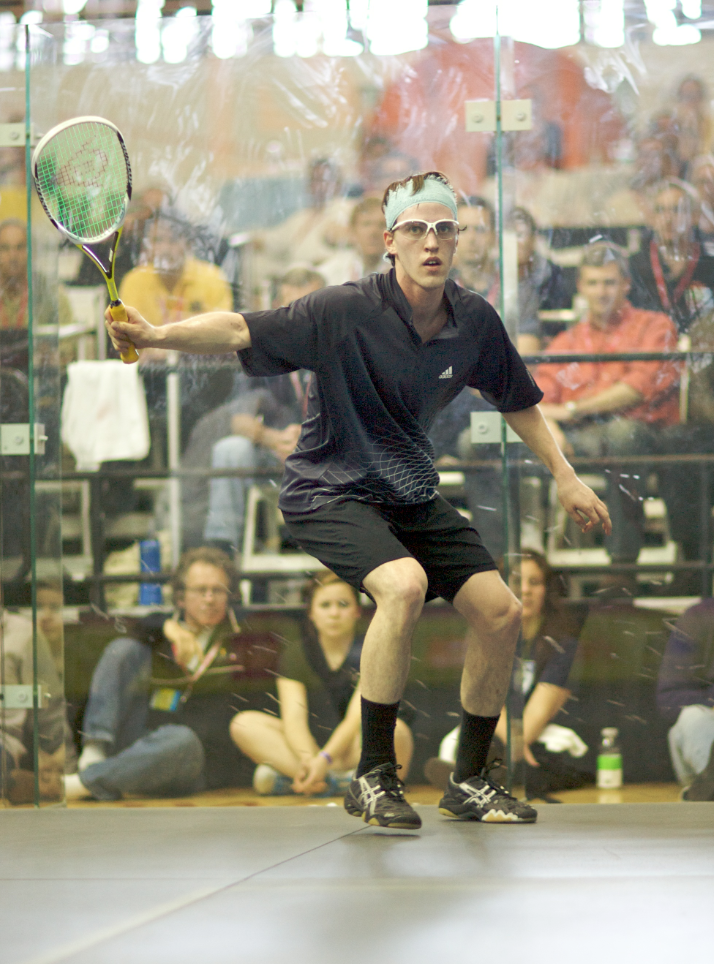
By Jay D. Prince
Tradition. Tradition is the word we attach to activities, or customs or stories that we pass down from generation to generation. At the conclusion of the Indy 500, the winner hops out of his car and guzzles a huge bottle of cold milk while spilling most of it all over himself (and perhaps sometime soon, all over herself). That’s tradition. Or how about the winners of the Men’s and Women’s Wimbledon Championship? The tradition there is for the two to dance with one another at the end of tournament party. That’s tradtion. And another tradition is all of the pomp and circumstance on the day of the Kentucky Derby.
Each year, the U.S. Squash Championships are played during the weekend of (or just before) St. Patrick’s Day. But in 2008, at the centennial playing of the event, the host city of Atlanta may have given new meaning to the tradition of the annual squash event.
For most who play in the U.S. Championships every year, the weeks leading up to them are typically spent playing a lot of squash, putting extra time in to maximize fitness and trying to avoid the injury bug. In years past, the anticipation of the tournament hits a crescendo once first-round start times are released. From the day entries are submitted until that opening round is known, there is the practice and a certain level of curiosity about what this year’s tournament will be like.
How many people will be there? How big will the draws be? How early in the morning will the first matches be played? Will towels be provided? Huh?
But this year, something was different. Oh sure, Atlanta was going to be the host city for the first time. In fact, this year would be the first trip to the Southern half of the United States since the tournament was held in Los Angeles in 1998.
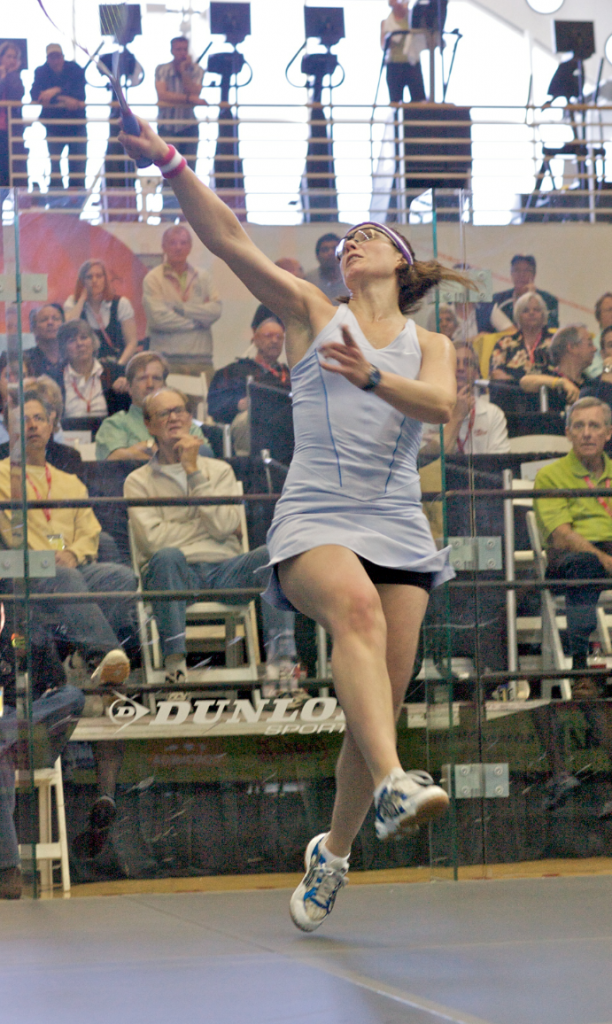
No. What was different was that the 2008 Miller Zell U.S. Squash Championships was an “event” unlike any other over the past 20 years. Instead of being left to surmise what the four days in Atlanta might bring, the Tournament Chairman e-mailed the participants nearly a month in advance and made a very bold statement: “Dear Miller Zell U.S. Squash Championships participant…let me start with a big claim. Welcome to the best squash tournament you will ever play.”
He wasn’t kidding. Attached to that e-mail was information describing the social events planned, the host venue, the hotel, transportation options and an invitation to play golf or try one’s hand at fly-fishing if arriving a day early.
“Okay, that’s different.” Sounds mundane enough, but that note amounted to a “welcome” to something big; something unusual; something to look forward to.
If nothing else, the Atlanta organizers had obviously spent some time finding a few sponsors and thinking about some amenities that might be appreciated by the players.
Pulling into the parking lot of the Midtown Athletic Club, the uniqueness of this year’s Championships became obvious. Massive signage covering the ends of the club, banners in the parking lot and club staff welcoming participants was a clear indication that everyone involved in organizing the event had gotten it right.
Complementing the five ASB courts upstairs was the all-glass McWil Tour Court smack dab in the middle of the gymnasium with seating all around and a hospitality area for patrons. More banners, decorated tins and markings on the back walls completed the transformation of the Club into the complete host of this year’s Championships.
Unfortunately, for the organizers, just weeks before the start of the tournament, the men’s Professional Squash Association withdrew sanctioning of all events being played on the glass floor of the McWil Court. After all of the slipping and falling during the World Open in Bermuda, the court was deemed to be potentially too dangerous for play. Attempts by US Squash and the tournament committee to have the sanctioning grandfathered in were denied which meant the S.L. Green division would not be sanctioned by PSA. No matter, there was no time to make a change so the matches were played as scheduled—and slipping was a non-issue throughout.

The only glitch with the glass floor came during the final of the Men’s 45+ when Diniar Alikhan moved to the front right of the court only to have his foot sink into the floor. One of the glass panels had broken and was breaking apart like a sink hole with the pieces being held together by the floor coating. But rather than panicking, the match was moved to another court, the panel replaced in the glass floor and the rest of the day went off without a hitch.
Part of the tradition of the U.S. Championships that had been missing for the past few years is the social events. In the past, Saturday night was reserved for a semi-formal dinner and an evening of dancing. The Atlanta organizers brought this component back too. From the Thursday barbecue buffet at the courts, to the Friday evening cocktail party at the world famous, and world’s largest, aquarium (including bus transportation to and from…and a near miss with the tornado that hit just minutes after the return to the hotel), to the Saturday soiree at the Piedmont Driving Club, the 2008 Miller Zell U.S. Championships had it all—and raised the bar to new levels for future events.
To pull all of the event together required fund-raising and planning at a level that has not been reached before. And lead sponsor, Miller Zell, a company specializing in retail strategy, design, production and installation with an eye toward maximizing the customer experience, was instrumental in not only providing money but also in creating an environment that went far beyond squash.
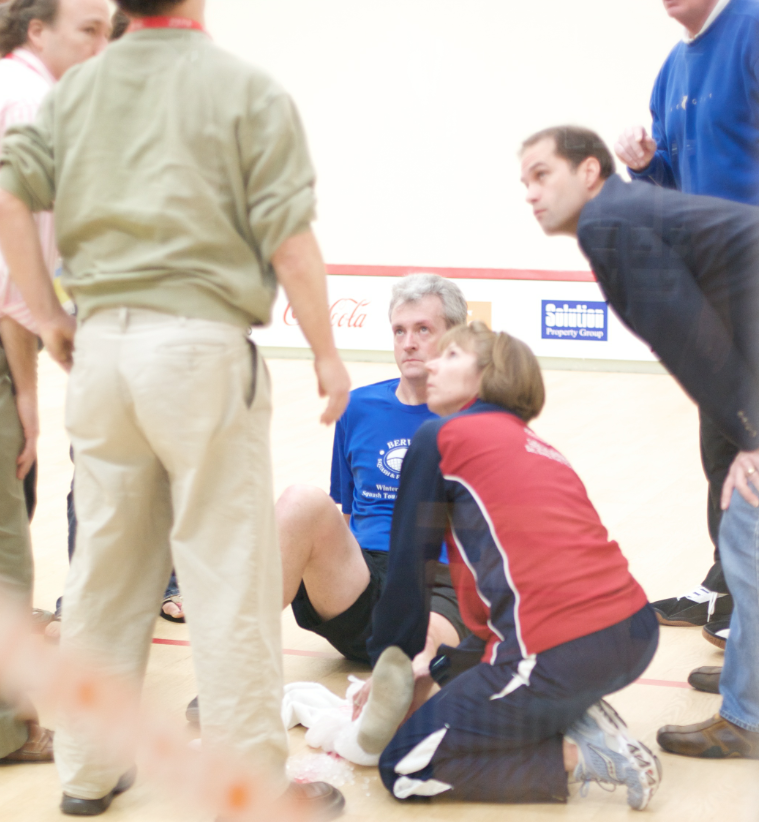
“We started talking about this in SESRA (Southeast Squash Racquets Association) about 18 months before the event,” said Tournament Chairman Bob Burton. “We approached our bid for the Championships with several goals in mind. The first was to establish a new standard of quality for the National Age Groups and to showcase the S.L. Green; to reflect positively on the city of Atlanta; to build a sense of unity within Atlanta squash; and to have fun (among others).”
Putting together a fun-filled weekend is one thing, but taking a business-like approach is something entirely different. “We wanted to do a tournament that would stand on its own from an economic point of view,” added Burton, “so that a sponsor that gave up some money would actually feel like they got something back for it at the end of the tournament. And that would be exposure and profile with the people who participated and played; to create an environment in which they would do it again if they were asked.” Hence the lengths to which the weekend was put together. “It has to be an event, and it has to have signage, and it has to have a logo, and it has to reach out to the community, because that’s where all the energy comes from,” Burton concluded.
On the courts, most of the age groups went as expected. Local pro, Andre Maur, repeated as Men’s 40+ winner, as did Mick Joint in the 35+, and Jay Nelson (for his umpteenth title) in the 65+ (though he won the 60+ last year). In the Men’s 60+, Peter Morse turned the tables on Bert Kornyei (who beat Morse in the final last year) by taking the final in four games. Tom Rumpler, another local Atlanta pro, lived up to his top seeding in the Men’s 55+ by beating Fred Clement in a three-game final.
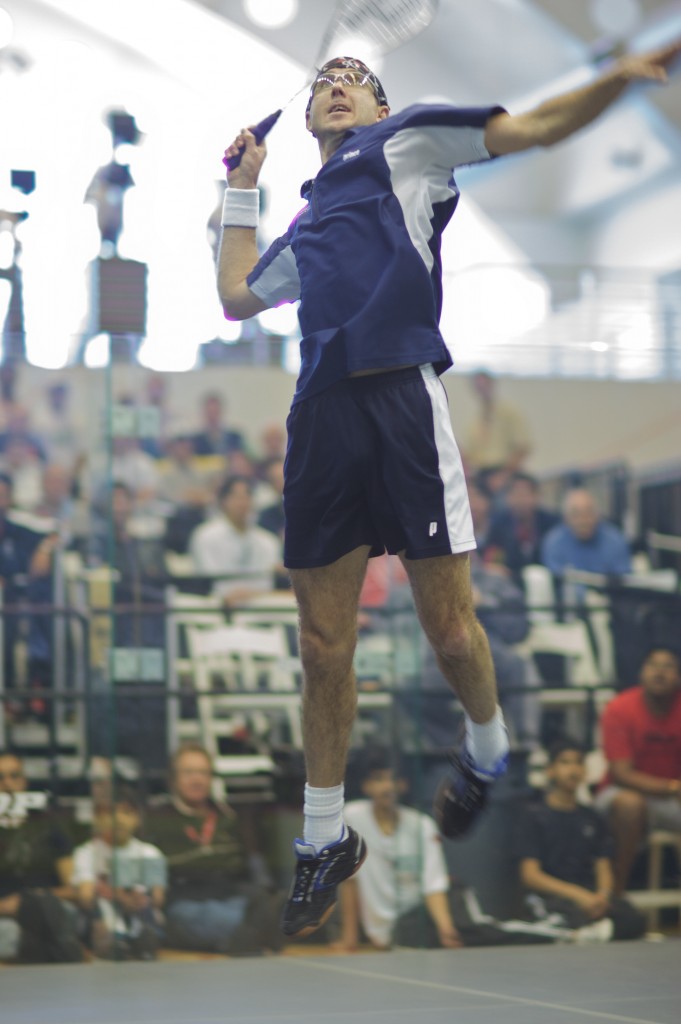
The Men’s 45+ featured another classic battle between Atlanta’s Diniar Alikhan in the semifinals when Millman had match ball in the fourth game only to fall short in the fifth, 10-9. Dominic Hughes, the overwhelming favorite to repeat as champion, had little difficulty reaching the final but, just after his match with Alikhan had been moved to a side court (as a result of the glass court floor breaking), Hughes fell to the floor with a ruptured Achilles tendon. Hughes had surgery a few days after and is rehabbing with the goal of being back on court by August, and he says, “I fully intend to regain my title next year.”
In the women’s divisions, which for the second consecutive year were very small, only Marjin Wall (50+) repeated as champion. Juliana Lilien pulled off a mild upset by beating Amy Milanek in the four-player 40+ round robin to win the division. Victoria Chishimba was undefeated in the 35+ round robin, and Jill Gaskell also swept through the 45+ round robin.
On center stage was the Men’s S.L. Green and Women’s Open Championships. Julian Illingworth, who last year overcame the pressure to win in his hometown of Portland, Oregon, dropped just one game—in the semifinals against Gilly Lane—en route to his fourth consecutive title. Natalie Grainger, who last year won her first Women’s U.S. Championship after gaining her citizenship just a month prior, swept her way to her second title when she beat 7-time winner Latasha Khan, 3-0, in the finals. Reflective of the small number of women playing throughout the weekend, the Women’s Open featured just six players including 15-year-old Olivia Blatchford who lost to Ivy Pochoda in the quarters, and Penn sophomore Kristen Lange who fell to Grainger in the semis.
This year also introduced the “National Open” for non-citizens ineligible for the S.L. Green. Featuring former World No. 1 and current head coach of Franklin & Marshall, John White, and four-time Intercollegiate Champion, Yasser El Halaby, the National Open looks to be a welcome addition to the U.S. Championships. In the final, White owned the court and took the inaugural title in three short games.
The legacy of the 2008 Miller Zell U.S. Squash Championships lies in the hands of future hosts of the annual event. Prior to dividing the Skill Level and Age Group Nationals into separate events, the tradition had become one of 600+ players convening for a massive tournament. But lost along the way was the extensive social atmosphere that made the weekend special. Atlanta reestablished that tradition by focusing on the participants as opposed to the draws.
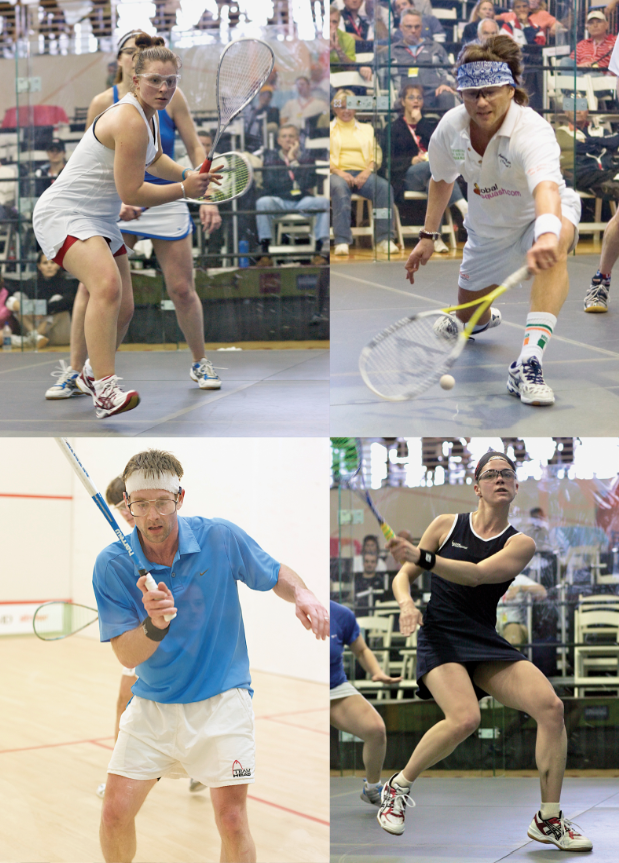
“In January and February, we focused on trying to build national awareness through advertising and sending e-mails to the people who were signing up to tell them that what we were doing was special,” said Burton. “We were trying to say, ‘although this is an event taking place in Atlanta, it has national exposure, national reach, and we think that even if you don’t play in it, you should know it’s taking place and you should know who’s sponsoring it.’”
And the glue that was also critical to holding it all together was the unprecedented cooperation of all the teaching pros in Atlanta. Andre Maur, Tom Rumpler and Alladin Mitha, who all run their own programs, put their energy together to drive the camaraderie of the entire weekend. “We didn’t have pros pulling in different directions or wondering who would get the credit,” reiterated Burton. “They all got credit for this.”
According to Bob Burton, he will gladly supply U.S. Squash with a “template” of sorts for future Championships. If so, perhaps it’s time to come up with something to cap the rediscovered tradition of the annual event. Maybe the winners should all jump into the club pool—it works for the winner of the Dinah Shore Nabisco Golf Classic when she jumps into the lake bordering the 18th green. Now that’s tradition!


